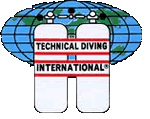

TDI Basic Nitrox course
 |
|
TDI Basic Nitrox course |
The introduction to nitrox/EANx diving. A very short, uncomplicated course, for recreational divers, of any level.
The pre-requisites for this course are a minimum age of 15, and a minimum certification level of Open water diver or current enrolment in an entry level diving course.
Students will be instructed in the safe use of enriched air nitrox, from 21% though to EANx 40, to a max depth of 40 meters.
The course duration is 3 hours-1 day, 2 dives are optional, not required, before certification.
The logic behind having optional dives in the basic nitrox course, is based on the fact that the diving itself is no different from the type of diving, you’ve been doing, up until now, providing you’ve been diving within your plan and training depth limit.
What needs to be clearly understood is the importance of discipline regarding the dive plan. Nitrox divers who “plan their dives, and dive their plans”, exceeding the Mod (maximum oxygen/operating depth) of a specific mix, could lead to drowning during a dive caused by an oxygen seizure and convulsion. For the focused, mature, nitrox diver, the only acceptable reason for exceeding the planned depth, would be to assist a diver, (buddy), having a serious problem, the possible consequences of breathing an excessively high ppO2 underwater, must be understood, accepted, and planned for.
Minimum classroom/theory hours 3
Students will master the necessary knowledge to clearly understand the advantages and potential dangers of enriched air nitrox diving.
With the introduction of oxygen tracking, if limits based on gas toxicity, (CNS O2 Tox), are not exceeded, the likelihood of an oxygen related problem during the dive are reduced to an acceptable level.
After around three hours of theory, analyzing the O2 content of a nitrox tank and completing the final exam successfully, divers will be certified in the use of nitrox gas from 21% through to nitrox 40.
Upon completion
Divers will be able to reduce nitrogen loading at current depths for current/air Ndl’s/times by taking advantage of the ideal mix for a specific depth, adding a comfortable safety factor regarding Nitrogen loading, reducing post dive fatigue, and minimising the likelihood of a decompression related problem on all dives. Also the diver has the ability take advantage of a longer bottom time (NDL), at current depths, with the ideal mix instead of air. For the first time, nitrogen may not be the limiting factor regarding bottom time, instead, cylinder volume combined with fill pressure and your breathing rate.
Air is not the ideal gas mix to breath in the first 40 meters.
You now have the Knowledge and possibility to select the ideal mix for your planned depth and type of dive.